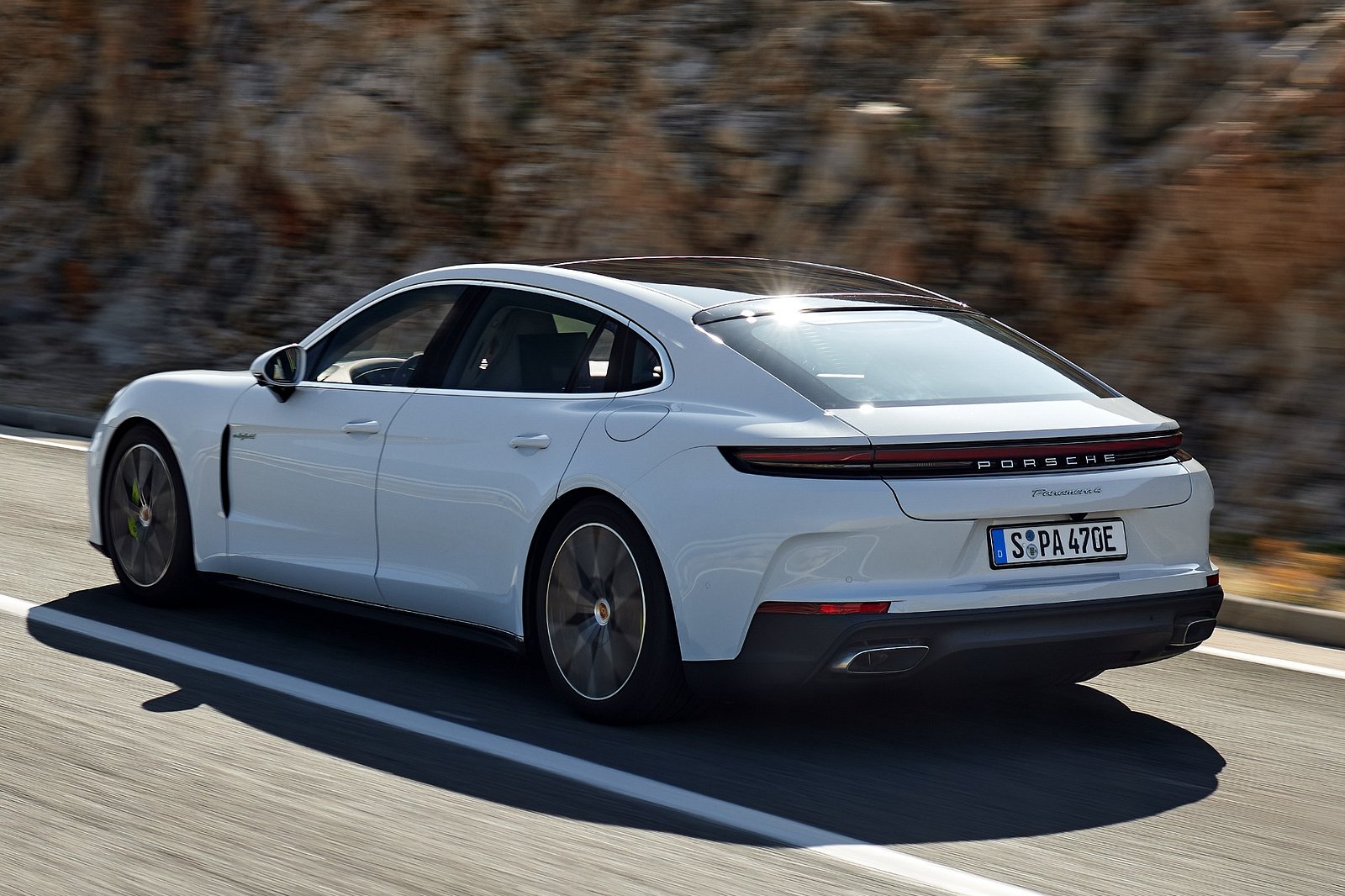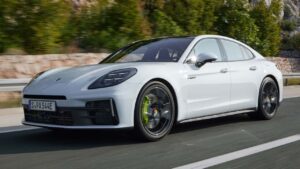Freshly Released Plug-in Hybrids without Turbo Feature Offer Great Savings.
In late 2019, the revamped Porsche Panamera made its debut with updated features for the standard, all-wheel drive, and Turbo E-Hybrid models. Recently, the German car company announced two previously unseen trims: the 4 E-Hybrid and 4S E-Hybrid.
They both showcase an electrified 2.9-liter twin-turbo V6 engine and a fresh high-voltage 25.9 kWh (gross) battery that occupies the same amount of space as its forerunner. Additionally, each boasts a brand-new electric motor, providing improved performance compared to previous models (achieving up to 187 horsepower and 331 lb-ft of torque). This motor is situated within the housing of the dual-clutch PDK transmission in order to reduce weight.
So, exactly how much power do we have collectively?


The standard Panamera 4 E-Hybrid boasts an improved engine that delivers 300 horsepower on its own, resulting in a total of 463 horsepower and 479 pound-feet of torque. This allows for impressive acceleration, with a 0-60 mph time of 3.9 seconds and a maximum speed of 174 mph. For those seeking even more power, the 4S E-Hybrid offers 348 horsepower from its V6 engine and a combined output of 536 horsepower and 553 pound-feet of torque. With these enhancements, the 4S E-Hybrid can go from 0 to 60 mph in just 3.5 seconds and reach a top speed of 180 mph.
Significantly, each of the latest Panamera E-Hybrid variations boast quicker charging times, enhanced acceleration, and a battery with an impressive 45% higher capacity than previous versions. Other notable enhancements, such as those made to the suspension, have already been mentioned in the unveiling of the 2024 Panamera.


These particular models have been enhanced with additional features such as an advanced lane-keep assist system, soft-close doors, 14-way comfort seats, and a heated steering wheel. All of these enhancements are now included as standard. The Panamera 4 E-Hybrid can be easily distinguished by its 19-inch wheels, black brake calipers, and Matrix LED headlights. On the other hand, the 4S model boasts of 20-inch Panamera AeroDesign wheels, exhaust tips in silver with a sporty appearance, and front brake calipers with ten pistons painted in striking red (optional colors include Acid Green and black). For those who prefer even more cutting-edge technology, Porsche offers a carbon-ceramic upgrade which includes larger front discs measuring 440 millimeters (17.3 inches) and rear rotors measuring 410 millimeters (16.1 inches), along with the option of 21-inch wheels for an additional cost.
One suggestion for achieving this is to select the option labeled “Porsche Active Ride” when making adjustments. This feature utilizes a suspension setup equipped with dual-valve dampers that are capable of functioning at a rapid rate of 13 times per second.


A notable aspect to mention is that the E-Hybrids come equipped with their own set of driving options. Every model initially operates in all-electric E-Power mode and will automatically transition to Hybrid Auto mode when the battery level drops below a designated threshold. This mode controls the powertrain according to the current driving conditions and can even make adjustments based on the car’s GPS location. For instance, while navigating through city centers, the vehicle may solely rely on electric power and only engage the combustion engine when cruising at higher speeds on the highway. In addition to the more efficient Sport and Sport Plus modes, there are also two E-Hybrid-specific modes: E-Hold, which maintains the current battery level, and E-Charge, which replenishes the battery up to 80% while the car is running above 34 mph.
When it comes to pricing, the Panamera 4 E-Hybrid has a starting price of $115,500, while the 4S E-Hybrid is priced at $126,800. These prices do not include delivery fees of $1,995. Both of these models will be available at dealers in the United States starting this autumn.







